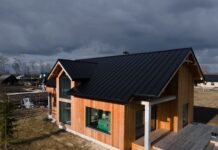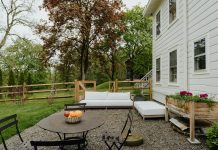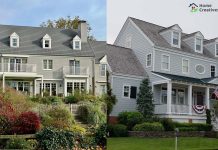In cities where green space is scarce, rooftop landscaping is changing how people experience their homes. Converting rooftops, terraces, and even small balconies into functional retreats gives residents access to nature without leaving the city. Designers are creating usable, calm spaces that provide shade, greenery, and privacy, all while increasing property value.
Wellness in the City: Why Rooftop Landscaping Matters
Access to nature is limited for many urban residents. Rooftop landscaping provides daily exposure to plants, fresh air, and private outdoor space. Studies show that green areas reduce stress and improve focus, which is why these spaces are becoming part of modern city living.
Vertical gardens, natural privacy screens, and noise-reducing plants turn rooftops into areas for morning coffee, yoga, or family gatherings. They also add visual softness to hard city skylines, making the surroundings feel warmer and more livable.
Design Solutions for Small Spaces
Most urban rooftops and terraces have limited space, but good planning can make them highly functional. Vertical gardening is a key solution, using trellises, planter walls, and climbing plants to make the most of vertical surfaces.
Custom seating layouts, layered greenery, and compact furniture can transform empty rooftops into outdoor rooms that feel larger than they are. Partnering with professional services like Tier II Landscape Design can help achieve a layout that is both practical and visually appealing. They focus on designs that optimize space, select durable materials, and ensure plants thrive in challenging city conditions.
Tailored Living, One Rooftop at a Time
Every project starts with understanding how the space will be used. Families may want open play areas for children, while professionals might prefer a quiet reading nook or dining space for entertaining. Plant selection, paving materials, and lighting are all tailored to these preferences.
Built-in benches, planters, and weather-resistant finishes make the space usable year-round. Designers also focus on drainage, wind protection, and shade solutions to maintain comfort and prevent damage during extreme weather.
A Greener Future Starts at Home
Rooftop landscaping offers more than personal enjoyment. It improves air quality by filtering pollutants, supports biodiversity by attracting birds and pollinators, and lowers heat absorption, helping reduce cooling costs. In many cities, green rooftops also contribute to better stormwater management by absorbing rain.
These benefits make rooftop gardens a practical investment for homeowners and developers alike. As more cities promote sustainable building practices, rooftop landscaping is becoming a standard feature in residential projects. It adds beauty, functionality, and environmental value, helping residents enjoy healthier city living.





























